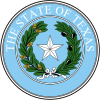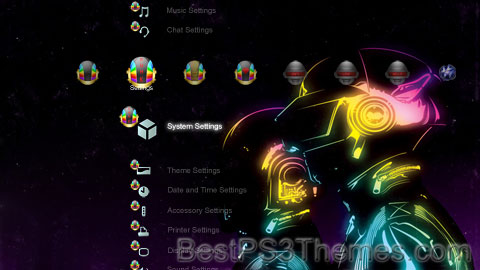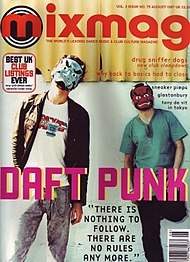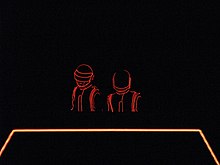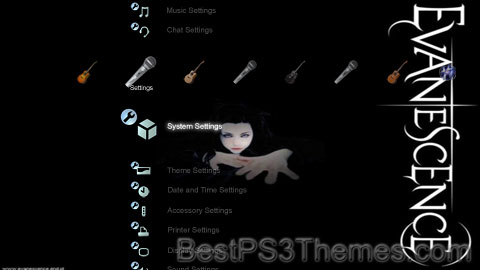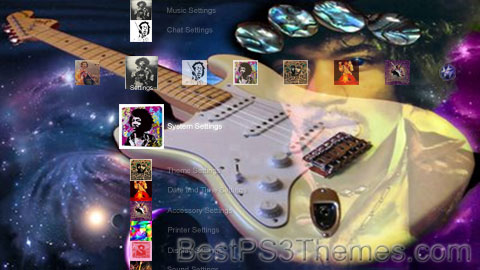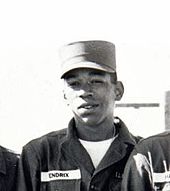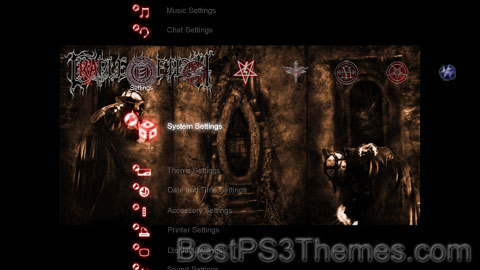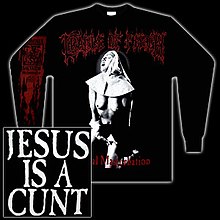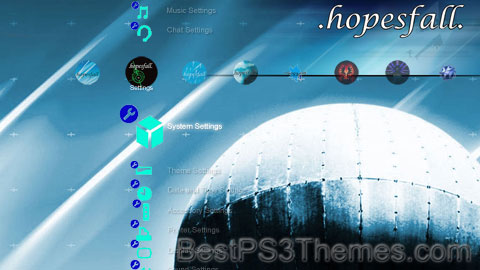Avril Lavigne theme by Rainman
Download: AvrilLavigne_5.p3t
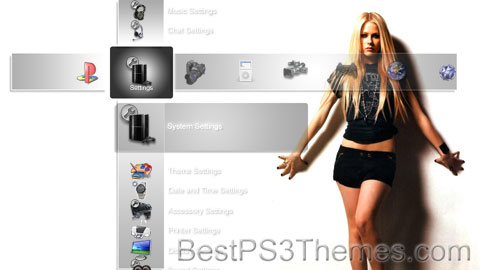
(10 backgrounds, HD only)
Avril Lavigne | |
|---|---|
 Lavigne in 2019 | |
| Born | Avril Ramona Lavigne September 27, 1984 Belleville, Ontario, Canada |
| Citizenship |
|
| Occupations |
|
| Years active | 1999–present |
| Works | |
| Spouses | |
| Relatives | Ryota Kohama (brother-in-law) |
| Awards | Full list |
| Musical career | |
| Genres | |
| Instruments |
|
| Labels | |
TikTok information | |
| Page | |
| Followers | 5.7 million |
| Likes | 39.2 million |
Last updated: June 28, 2024 | |
| Website | avrillavigne |
| Signature | |
 | |
Avril Ramona Lavigne CM[1] (/ˈævrɪl ləˈviːn/ AV-ril lə-VEEN, French: [avʁil ʁamɔna laviɲ]; born September 27, 1984) is a Canadian singer-songwriter. She is considered a key musician in the development of pop-punk music, as she paved the way for female-driven, punk-influenced pop music in the early 2000s.[2][3] Her accolades include eight Grammy Award nominations.
At age 16, Lavigne signed a two-album recording contract with Arista Records. Her debut studio album, Let Go (2002), is the best-selling album of the 21st century by a Canadian artist. It yielded the successful singles "Complicated" and "Sk8er Boi", which emphasized a skate punk persona and earned her the title "Pop-Punk Queen" from music publications.[4][5] Her second studio album, Under My Skin (2004), became Lavigne's first album to reach the top of the Billboard 200 chart in the United States, going on to sell 10 million copies worldwide.
Lavigne's third studio album, The Best Damn Thing (2007), reached number one in seven countries worldwide and saw the international success of its lead single "Girlfriend", which became her first single to reach the top of the Billboard Hot 100 in the United States. Her next two studio albums, Goodbye Lullaby (2011) and Avril Lavigne (2013), saw continued commercial success and were both certified gold in Canada, the United States, and other territories.[6][7][8] After releasing her sixth studio album, Head Above Water (2019), she returned to her punk roots with her seventh studio album, Love Sux (2022).[9]
Early life[edit]
Avril Ramona Lavigne was born on September 27, 1984, in Belleville, Ontario. She was named Avril (the French word for April) by her father.[10] He and Lavigne's mother recognized their child's vocal abilities when she was two years old and sang "Jesus Loves Me" on the way home from church.[11] Lavigne has an older brother named Matthew and a younger sister named Michelle,[12] both of whom teased her when she sang. "My brother used to knock on the wall because I used to sing myself to sleep and he thought it was really annoying."[11] She is the sister-in-law of Japanese band One OK Rock bassist Ryota Kohama.[13] Lavigne's paternal grandfather Maurice Yves Lavigne was born in Saint-Jérôme, Quebec.[14] A member of the Royal Canadian Air Force, he married Lucie Dzierzbicki, a French native of Morhange in 1953. Their son, Jean-Claude Lavigne, was born in 1954 at RCAF Station Grostenquin near Grostenquin, Lorraine.[15] When Jean-Claude was a child, the family moved to Ontario, and in 1975, he married Judith-Rosanne "Judy" Loshaw.[16][17]
When Lavigne was 5, the family moved to Napanee (now incorporated as Greater Napanee),[18] a town with a population of approximately 5,000 at the time.[19][20][21] Also when she was 5, she was diagnosed with ADHD, which caused her problems during her school years.[22]
To support her musical interests, her father bought her a microphone, a drum kit, a keyboard, and several guitars, and converted their basement into a studio. Her father often played bass at the church the family attended, the Third Day Worship Centre in Kingston. When Lavigne was 14 years old, her parents took her to karaoke sessions.[23]
Lavigne performed at country fairs, singing songs by Garth Brooks, the Chicks, and Shania Twain, and began writing her own songs. Her first song was called "Can't Stop Thinking About You", about a teenage crush, which she described as "cheesy cute".[24]
Lavigne also played hockey during high school and won MVP twice as a right winger in a boys league.[25]
Career[edit]
1999–2001: Career beginnings[edit]
In 1999, Lavigne won a radio contest to perform with Canadian singer Shania Twain at the Corel Centre in Ottawa, before an audience of 20,000 people.[26][18][19] Twain and Lavigne sang Twain's song, "What Made You Say That",[18] and Lavigne told Twain that she aspired to be "a famous singer".[19] During a performance with the Lennox Community Theatre, Lavigne was spotted by local folksinger Stephen Medd. He invited her to contribute vocals on his song, "Touch the Sky", for his 1999 album, Quinte Spirit. She later sang on "Temple of Life" and "Two Rivers" for his follow-up album, My Window to You, in 2000.
In December 1999, Lavigne was discovered by her first professional manager, Cliff Fabri, while singing country covers at a Chapters bookstore in Kingston.[18][19] Fabri sent out VHS tapes of Lavigne's home performances to several industry prospects, and Lavigne was visited by several executives.[27] Mark Jowett, co-founder of a Canadian management firm, Nettwerk, received a copy of Lavigne's karaoke performances recorded in her parents' basement.[28] Jowett arranged for Lavigne to work with producer Peter Zizzo during the summer of 2000 in New York, where she wrote the song "Why". Lavigne was noticed by Arista Records during a trip to New York.[27]
In November 2000,[20] Ken Krongard, an A&R representative, invited Antonio "L.A." Reid, then head of Arista Records, to Zizzo's Manhattan studio to hear Lavigne sing. Her 15-minute audition "so impressed" Reid that he immediately signed her to Arista with a deal worth $1.25 million for two albums and an extra $900,000 for a publishing advance.[21][18] By this time, Lavigne had found that she fit in naturally with her hometown high school's skater clique, an image that carried through to her first album, but although she enjoyed skateboarding, school left her feeling insecure. Having signed a record deal, and with support from her parents, she left school to focus on her music career.[20][29][24] Lavigne's band, which were mostly the members of Closet Monster, was chosen by Nettwerk, as they wanted young performers who were up and coming from the Canadian punk rock scene who would fit with Lavigne's personality.[30]
2002–2003: Let Go[edit]

Reid gave A&R Joshua Sarubin the responsibility of overseeing Lavigne's development and the recording of her debut album. They spent several months in New York working with different co-writers, trying to forge an individual sound for her. Sarubin told HitQuarters that they initially struggled; although early collaborations with songwriter-producers including Sabelle Breer, Curt Frasca and Peter Zizzo resulted in some good songs, they did not match her or her voice. It was only when Lavigne went to Los Angeles in May 2001 and created two songs with the Matrix production team—including "Complicated", later released as her debut single—that the record company felt she had made a major breakthrough. Lavigne worked further with the Matrix and also with singer-songwriter Clif Magness. Recording of Lavigne's debut album, Let Go, finished in January 2002.[31]
Lavigne released Let Go in June 2002 in the US, where it reached number two on the Billboard 200 albums chart. It peaked at number one in Australia, Canada, and the UK—this made Lavigne, at 17 years old, the youngest female soloist to have a number-one album on the UK Albums Chart at that time.[32] By the end of 2002, the album was certified four-times Platinum by the RIAA, making her the bestselling female artist of 2002 and Let Go the top-selling debut of the year.[33] By May 2003, Let Go had accumulated over 1 million sales in Canada, receiving a diamond certification from the Canadian Recording Industry Association.[34] By 2009, the album had sold over 16 million units worldwide.[35] By March 2018, the RIAA certified the album seven-times Platinum, denoting shipments of over seven million units in the US.[36]
Lavigne's debut single, "Complicated", peaked at number one in Australia and number two in the US. "Complicated" was one of the bestselling Canadian singles of 2002, and one of the decade's biggest hits in the US,[37] where subsequent singles "Sk8er Boi" and "I'm with You" reached the top ten.[38] With these three singles, Lavigne became the second artist in history to have three top-ten songs from a debut album on Billboard's Mainstream Top 40 chart.[39] Lavigne was named Best New Artist (for "Complicated") at the 2002 MTV Video Music Awards,[40] won four Juno Awards in 2003 out of six nominations,[41] received a World Music Award for "World's Bestselling Canadian Singer", and was nominated for eight Grammy Awards, including Best New Artist and Song of the Year for "Complicated".[42]
In 2002, Lavigne made a cameo appearance in the music video for "Hundred Million" by the pop punk band Treble Charger.[43] In March 2003, Lavigne posed for the cover of Rolling Stone magazine,[16] and in May she performed "Fuel" during MTV's Icon tribute to Metallica.[44][45] During her first headlining tour, the Try to Shut Me Up Tour, Lavigne covered Green Day's "Basket Case".[46]
2004–2005: Under My Skin[edit]

Lavigne's second studio album, Under My Skin, was released in May 2004 and debuted at number one in Australia, Canada, Japan, the UK, and the US.[47] The album was certified five-times Platinum in Canada[48] and has sold 10 million copies,[49] including 3.2 million in the US.[50] Lavigne wrote most of the album's tracks with Canadian singer-songwriter Chantal Kreviazuk, and Kreviazuk's husband, Our Lady Peace front man Raine Maida, co-produced the album with Butch Walker and Don Gilmore. Lavigne said that Under My Skin proved her credentials as a songwriter, saying that "each song comes from a personal experience of mine, and there are so much [sic] emotions in those songs".[51] "Don't Tell Me", the lead single off the album, reached the top five in the UK and Canada and the top ten in Australia. "My Happy Ending", the album's second single, was a top five hit in the UK and Australia. In the US, it was a top ten entry on the Billboard Hot 100 and became a number-one pop radio hit. The third single, "Nobody's Home", did not manage to make the top 40 in the US and performed moderately elsewhere.
During early 2004 Lavigne went on the 'Live and By Surprise' acoustic mall tour in the US and Canada to promote Under My Skin, accompanied by her guitarist Evan Taubenfeld. In September 2004, Lavigne embarked on her first world tour, the year-long Bonez Tour. Lavigne won two World Music Awards in 2004, for 'World's Best Pop/Rock Artist' and 'World's Bestselling Canadian Artist' and won three Juno Awards from five nominations in 2005, including 'Artist of the Year'.[52] She also won in the category of 'Favorite Female Singer' at the eighteenth annual Nickelodeon Kids' Choice Awards.[53]
Lavigne co-wrote the song "Breakaway", which was recorded by Kelly Clarkson for the soundtrack to the 2004 film The Princess Diaries 2: Royal Engagement.[54] "Breakaway" was released as a single in mid 2004 and subsequently included as the title track on Clarkson's second album, Breakaway. Lavigne performed the Goo Goo Dolls song "Iris" with the band's lead singer John Rzeznik at Fashion Rocks in September 2004,[55] and she posed for the cover of Maxim in October 2004.[56] She recorded the theme song for The SpongeBob SquarePants Movie (released in November 2004) with producer Butch Walker.[57]
2006–2011: The Best Damn Thing and Goodbye Lullaby[edit]
In February 2006, Lavigne represented Canada at the closing ceremony of the 2006 Winter Olympics.[58] Fox Entertainment Group approached Lavigne to write a song for the soundtrack to the 2006 fantasy-adventure film Eragon; her contribution, "Keep Holding On", was released as a single to promote the film and its soundtrack.[59][60][61]

Lavigne's third album, The Best Damn Thing, was released in April 2007 and debuted at number one on the U.S. Billboard 200,[62] and subsequently achieved Platinum status in Canada.[48] The album sold more than 2 million copies in the US.[36] Its lead single, "Girlfriend", became Lavigne's first number-one single on the U.S. Billboard Hot 100 and one of the decade's biggest singles.[62][63] The single also peaked at number one in Australia, Canada, and Japan, and reached number two in the UK and France. As well as English, "Girlfriend" was recorded in Spanish, French, Italian, Portuguese, German, Japanese, and Mandarin. The International Federation of the Phonographic Industry ranked "Girlfriend" as the most-downloaded track worldwide in 2007, selling 7.3 million copies, including the versions recorded in eight different languages.[64][65] "When You're Gone", the album's second single, reached the top five in Australia and the United Kingdom, the top ten in Canada, and the top forty in the US. "Hot" was the third single and charted only at number 95 in the US, although it reached the top 10 in Canada and the top 20 in Australia.
Lavigne won two World Music Awards in 2007, for 'World's Bestselling Canadian Artist' and 'World's Best Pop/Rock Female Artist'. She won her first two MTV Europe Music Awards, received a Teen Choice Award for 'Best Summer Single', and was nominated for five Juno Awards.[52] In December 2007, Lavigne was ranked number eight in Forbes magazine's list of 'Top 20 Earners Under 25', with annual earnings of $12 million.[66] In March 2008, Lavigne undertook a world tour, The Best Damn World Tour, and appeared on the cover of Maxim for the second time.[67] In mid-August, Malaysia's Islamic opposition party, the Pan-Malaysian Islamic Party, attempted to ban Lavigne's tour show in Kuala Lumpur, judging her stage moves "too sexy". It was thought that her concert on August 29 would promote wrong values ahead of Malaysia's Independence Day on August 31.[68] On August 21, 2008, MTV reported that the concert had been approved by the Malaysian government.[69]
In January 2010, Lavigne worked with Disney to create clothing designs inspired by Tim Burton's feature film Alice in Wonderland. She recorded a song for its soundtrack, "Alice", which was played over the end credits and included on the soundtrack album Almost Alice.[70][71][72] In February, Lavigne performed at the Vancouver 2010 Winter Olympics closing ceremony.[73] Lavigne's song "I'm with You" was sampled by Rihanna on the track "Cheers (Drink to That)", which is featured on Rihanna's fifth studio album, Loud (2010).[74][75] "Cheers (Drink to That)" was released as a single the following year, and Lavigne appeared in its music video.[76] In December 2010, American singer Miranda Cosgrove released "Dancing Crazy", a song written by Lavigne, Max Martin and Shellback. It was also produced by Martin.[77]
Lavigne began recording for her fourth studio album, Goodbye Lullaby, in her home studio in November 2008. Its opening track, "Black Star", was written to help promote her first fragrance of the same name.[78][79] Lavigne described the album as being about her life experiences rather than focusing on relationships, and its style as less pop rock than her previous material, reflecting her age.[79][80] The release date for Goodbye Lullaby was delayed several times, which Lavigne said was because of her label.[81][82] Goodbye Lullaby was released in March 2011,[83][80] and its lead single, "What the Hell", premiered in December 2010, ahead of the album's release.[83] Goodbye Lullaby received Juno Award nominations for Album of the Year and Pop Album of the Year.[52] By March 2018, Goodbye Lullaby sold more than 500,000 copies in the US, and it was certified Gold by the RIAA.[36]
2012–2017: Self-titled album[edit]

Three months after the release of Goodbye Lullaby, Lavigne announced that work on her fifth studio album had already begun, describing it as the musical opposite of Goodbye Lullaby[84] and "pop and more fun again".
MJJ Light Version
MJJ Light Version theme by VT94
Download: MJJLightVersion.p3t
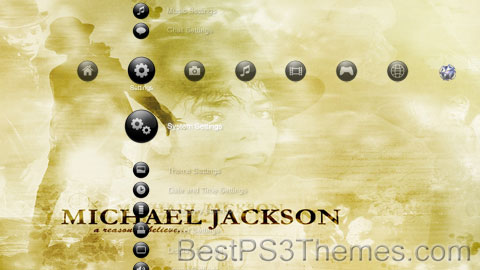
(4 backgrounds)
P3T Unpacker v0.12
Copyright (c) 2007. Anoop Menon
This program unpacks Playstation 3 Theme files (.p3t) so that you can touch-up an existing theme to your likings or use a certain wallpaper from it (as many themes have multiple). But remember, if you use content from another theme and release it, be sure to give credit!
Download for Windows: p3textractor.zip
Instructions:
Download p3textractor.zip from above. Extract the files to a folder with a program such as WinZip or WinRAR. Now there are multiple ways to extract the theme.
The first way is to simply open the p3t file with p3textractor.exe. If you don’t know how to do this, right click the p3t file and select Open With. Alternatively, open the p3t file and it will ask you to select a program to open with. Click Browse and find p3textractor.exe from where you previously extracted it to. It will open CMD and extract the theme to extracted.[filename]. After that, all you need to do for any future p3t files is open them and it will extract.
The second way is very simple. Just drag the p3t file to p3textractor.exe. It will open CMD and extract the theme to extracted.[filename].
For the third way, first put the p3t file you want to extract into the same folder as p3textractor.exe. Open CMD and browse to the folder with p3extractor.exe. Enter the following:
p3textractor filename.p3t [destination path]Replace filename with the name of the p3t file, and replace [destination path] with the name of the folder you want the files to be extracted to. A destination path is not required. By default it will extract to extracted.filename.
Texas
Texas theme by eddie g
Download: Texas.p3t
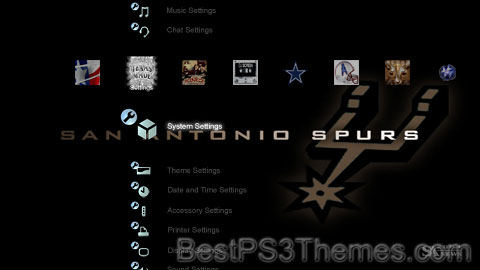
(13 backgrounds)
Texas | |
|---|---|
| Nickname: The Lone Star State | |
| Motto: Friendship | |
| Anthem: "Texas, Our Texas" | |
 Map of the United States with Texas highlighted | |
| Country | United States |
| Before statehood | Republic of Texas |
| Admitted to the Union | December 29, 1845 (28th) |
| Capital | Austin |
| Largest city | Houston |
| Largest county or equivalent | Harris |
| Largest metro and urban areas | Dallas–Fort Worth |
| Government | |
| • Governor | Greg Abbott (R) |
| • Lieutenant Governor | Dan Patrick (R) |
| Legislature | Texas Legislature |
| • Upper house | Senate |
| • Lower house | House of Representatives |
| Judiciary | Supreme Court of Texas (Civil) Texas Court of Criminal Appeals (Criminal) |
| U.S. senators | John Cornyn (R) Ted Cruz (R) |
| U.S. House delegation | 25 Republicans 13 Democrats (list) |
| Area | |
| • Total | 268,596[1] sq mi (695,662 km2) |
| • Land | 261,232[1] sq mi (676,587 km2) |
| • Water | 7,365[1] sq mi (19,075 km2) 2.7% |
| • Rank | 2nd |
| Dimensions | |
| • Length | 801[2] mi (1,289 km) |
| • Width | 773[2] mi (1,244 km) |
| Elevation | 1,700 ft (520 m) |
| Highest elevation | 8,751 ft (2,667.4 m) |
| Lowest elevation | 0 ft (0 m) |
| Population (2023) | |
| • Total | |
| • Rank | 2nd |
| • Density | 114/sq mi (42.9/km2) |
| • Rank | 26th |
| • Median household income | $66,963[6] |
| • Income rank | 22nd |
| Demonym(s) | Texan Texian (archaic) Tejano (usually only used for Hispanics) |
| Language | |
| • Official language | None |
| • Spoken language | |
| Time zones | |
| Majority of state | UTC−06:00 (Central) |
| • Summer (DST) | UTC−05:00 (CDT) |
| El Paso, Hudspeth, and northwestern Culberson counties | UTC−07:00 (Mountain) |
| • Summer (DST) | UTC−06:00 (MDT) |
| USPS abbreviation | TX |
| ISO 3166 code | US-TX |
| Traditional abbreviation | Tex. |
| Latitude | 25°50′ N to 36°30′ N |
| Longitude | 93°31′ W to 106°39′ W |
| Website | texas |
| List of state symbols | |
|---|---|
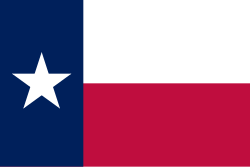 | |
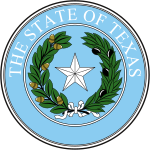 | |
| Slogan | The Friendly State |
| Living insignia | |
| Bird | Northern mockingbird (Mimus polyglottos) |
| Fish | Guadalupe bass (Micropterus treculii) |
| Flower | Bluebonnet (Lupinus spp., namely Texas bluebonnet, L. texensis) |
| Insect | Monarch butterfly (Danaus plexippus) |
| Mammal | Texas longhorn, nine-banded armadillo (Dasypus novemcinctus) |
| Mushroom | Texas star (Chorioactis geaster) |
| Reptile | Texas horned lizard (Phrynosoma cornutum) |
| Tree | Pecan (Carya illinoinensis) |
| Inanimate insignia | |
| Food | Chili |
| Game | Texas 42 dominoes |
| Instrument | Guitar |
| Shell | Lightning whelk (Busycon perversum pulleyi) |
| Ship | USS Texas |
| Soil | Houston Black |
| Sport | Rodeo |
| Other | Molecule: Buckyball (For more, see article) |
| State route marker | |
 | |
| State quarter | |
 Released in 2004 | |
| Lists of United States state symbols | |
Texas (/ˈtɛksəs/ TEK-səss, locally also /ˈtɛksɪz/ TEK-siz;[8] Spanish: Texas or Tejas,[b] pronounced [ˈtexas]) is the most populous state in the South Central region of the United States. It borders Louisiana to the east, Arkansas to the northeast, Oklahoma to the north, New Mexico to the west, and the Mexican states of Chihuahua, Coahuila, Nuevo León, and Tamaulipas to the south and southwest. Texas has a coastline on the Gulf of Mexico to the southeast. Covering 268,596 square miles (695,660 km2), and with over 30 million residents as of 2023,[10][11][12] it is the second-largest U.S. state by both area and population.
Texas is nicknamed the Lone Star State for its former status as an independent republic. The Lone Star can be found on the Texas state flag and the Texas state seal.[13] Spain was the first European country to claim and control the area of Texas. Following a short-lived colony controlled by France, Mexico controlled the territory until 1836 when Texas won its independence, becoming the Republic of Texas. In 1845, Texas joined the United States as the 28th state.[14] The state's annexation set off a chain of events that led to the Mexican–American War in 1846. Following victory by the United States, Texas remained a slave state until the American Civil War, when it declared its secession from the Union in early 1861 before officially joining the Confederate States of America on March 2. After the Civil War and the restoration of its representation in the federal government, Texas entered a long period of economic stagnation.
Historically, five major industries shaped the Texas economy prior to World War II: cattle, bison, cotton, timber, and oil.[15] Before and after the Civil War, the cattle industry—which Texas came to dominate—was a major economic driver and created the traditional image of the Texas cowboy. In the later 19th century, cotton and lumber grew to be major industries as the cattle industry became less lucrative. Ultimately, the discovery of major petroleum deposits (Spindletop in particular) initiated an economic boom that became the driving force behind the economy for much of the 20th century. Texas developed a diversified economy and high tech industry during the mid-20th century. As of 2022[update], it has the most Fortune 500 company headquarters (53) in the United States.[16][17] With a growing base of industry, the state leads in many industries, including tourism, agriculture, petrochemicals, energy, computers and electronics, aerospace, and biomedical sciences. Texas has led the U.S. in state export revenue since 2002 and has the second-highest gross state product.
The Dallas–Fort Worth metroplex and Greater Houston areas are the nation's fourth and fifth-most populous urban regions respectively. Its capital city is Austin. Due to its size and geologic features such as the Balcones Fault, Texas contains diverse landscapes common to both the U.S. Southern and the Southwestern regions.[18] Most population centers are in areas of former prairies, grasslands, forests, and the coastline. Traveling from east to west, terrain ranges from coastal swamps and piney woods, to rolling plains and rugged hills, to the desert and mountains of the Big Bend.
Etymology[edit]
The name Texas, based on the Caddo word táy:shaʼ (/tə́jːʃaʔ/) 'friend', was applied, in the spelling Tejas or Texas,[19][20][21][1] by the Spanish to the Caddo themselves, specifically the Hasinai Confederacy.[22]
During Spanish colonial rule, in the 18th century, the area was known as Nuevas Filipinas ('New Philippines') and Nuevo Reino de Filipinas ('New Kingdom of the Philippines'),[23] or as provincia de los Tejas ('province of the Tejas'),[24] later also provincia de Texas (or de Tejas), ('province of Texas').[25][23] It was incorporated as provincia de Texas into the Mexican Empire in 1821, and declared a republic in 1836. The Royal Spanish Academy recognizes both spellings, Tejas and Texas, as Spanish-language forms of the name.[26]
The English pronunciation with /ks/ is unetymological, contrary to the historical value of the letter x (/ʃ/) in Spanish orthography. Alternative etymologies of the name advanced in the late 19th century connected the name Texas with the Spanish word teja, meaning 'roof tile', the plural tejas being used to designate Indigenous Pueblo settlements.[27] A 1760s map by Jacques-Nicolas Bellin shows a village named Teijas on the Trinity River, close to the site of modern Crockett.[27]


